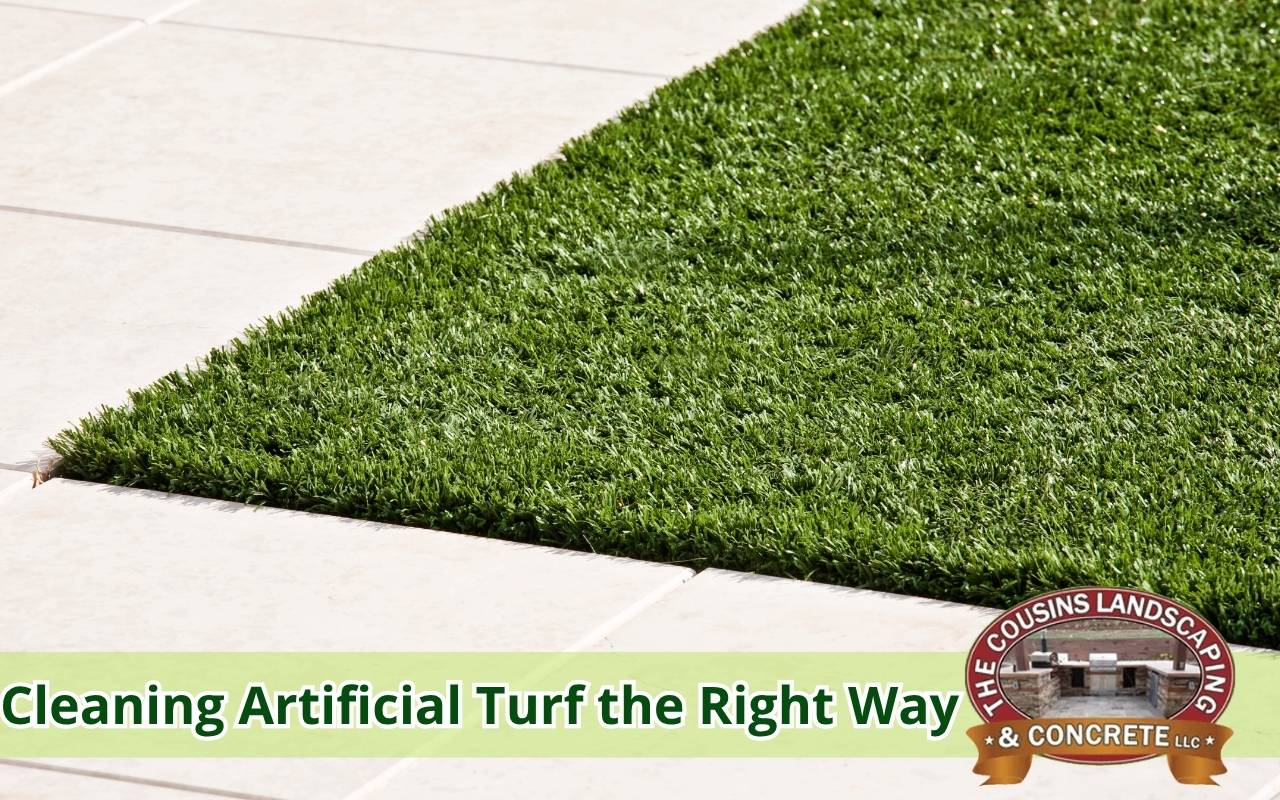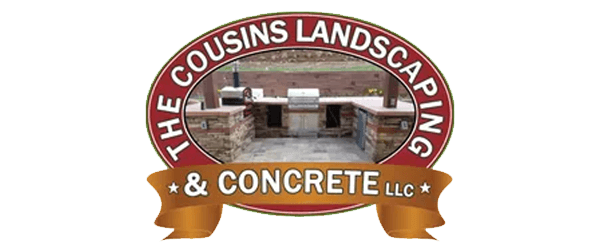
If you’ve made the switch to artificial grass, you already know it’s low-maintenance. But that doesn’t mean maintenance-free. Cleaning artificial turf regularly helps it look fresh, last longer, and stay safe for your family and pets.
At The Cousins Landscaping & Concrete LLC, we provide artificial turf installation and ongoing care to help homeowners get the most out of their investment. Whether you use your turf for play, pets, or landscaping, proper cleaning is key.
Why Artificial Grass Still Needs Maintenance
Debris and Dirt Buildup
Wind, leaves, dust, and pollen don’t discriminate—your synthetic lawn will still collect surface debris just like a natural one. Over time, buildup can dull the color and even clog drainage underneath.
Simple weekly or bi-weekly maintenance like brushing and rinsing helps avoid these issues and keeps your turf looking bright and clean.
Pet Use and Odor Control
If you have dogs or other pets, cleaning artificial turf becomes even more important. While turf drains well, urine and waste need to be cleaned up promptly. Using pet-friendly cleaners and rinsing the area helps prevent bacteria growth and keeps odors under control.
Artificial Grass Maintenance Tips for Everyday Care
Use a Leaf Blower or Rake Gently
To keep the surface clear, use a plastic rake or leaf blower to remove leaves and debris. Avoid metal tools, which can damage the turf fibers. Always rake against the grain of the turf to fluff it up and maintain an upright appearance.
Rinse with Water Regularly
Most of the time, a quick rinse with a hose is enough to clean dust and light debris. Focus on high-traffic areas or spots where pets frequently play or rest. During dry months, rinsing also helps keep the surface cooler.
Monthly and Seasonal Turf Cleaning Tips
In addition to regular upkeep, a deeper clean every few weeks helps extend your turf’s life. Here’s a sample routine:
- Monthly: Rinse entire area thoroughly, remove any stuck debris, and check seams or edges
- Quarterly: Use a stiff broom to brush and redistribute infill (if used), and inspect drainage
- Seasonally: Deep clean with an artificial turf-safe cleaner to remove bacteria and freshen up the fibers
This maintenance schedule works well in Colorado, where changing seasons bring dust, snow, and other environmental shifts.
FAQs About Cleaning Artificial Turf
How often should artificial turf be cleaned?
Light cleaning should be done weekly, while deeper cleaning can be done monthly or as needed based on use.
Can I use a pressure washer on artificial grass?
Use caution. A gentle spray at a distance may be fine, but high pressure can damage the turf backing or infill.
What’s the best way to remove pet odor from turf?
Rinse the area thoroughly and use an enzyme-based turf cleaner designed for pet use. Avoid harsh chemicals that may degrade the turf.
We offer turf maintenance tips for pet owners—reach out to The Cousins Landscaping & Concrete LLC today.
Keep Your Turf Looking Its Best Year-Round
Cleaning artificial turf doesn’t take much effort, but it makes a big difference in how your lawn looks and feels. With these artificial grass maintenance tips, you can keep your yard fresh, safe, and vibrant for years.
At The Cousins Landscaping & Concrete LLC, we offer installation and care guidance to make sure your synthetic lawn stays in top shape. Contact us today for help with turf cleaning, repairs, or a new installation.
